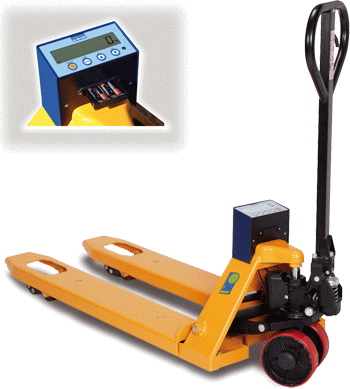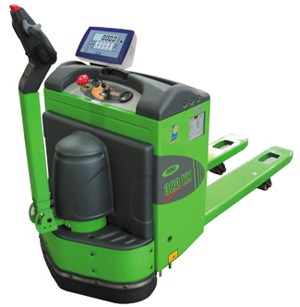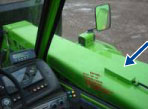| Feature | A. Hydraulic weighing system | B-1. Weighing carriage, permanent | B-2. Weighing carriage, ‘Quick-Tach’ | C. Weighing forks |
|---|---|---|---|---|
| Measuring principle | static: forklift and forks must stand still | forks and forklift stand still | forks and forklift stand still | forks and forklift stand still |
| Accuracy | 1 – 2 % | 0,2% | 0,2% | 0,2% |
| Can be stamped? | no | no | yes, OIML class III (0,1%) up to FEM III – 5 tons | yes, OIML class III (0,1%) up to FEM II – 2,5 tons |
| Min/max weight per weighing | 500 / 40.000 kg | 50 / 15.000 kg | 50 / 15.000 kg | 50 / 3000 kg |
| Installation | easy on each forklift truck, on each type of lift carriage | less easy, in your workshop |
easy on each forklift with standard fork carriage up to ISO/FEM IV | easy on each forklift with standard fork carriage up to ISO/FEM II and III up to 3000 kg |
| Front attachment | any | any except integrated side shifters | any | only with side shifters and some fork positioners |
| Harsh working conditions | insensitive | good | good | medium |
A. Check weighing by measuring the hydraulic pressure to the lift cylinders at a certain fork height:
Static measurement at standstill: forks are lifted to a certain height where the pressure is measured and weight displayed after about 2 seconds;
The height is detected by an inductive switch;
From 500 to 40.000 kg;
Standard accuracy : average 1% on 10 weights, 2% on an individual weight.
B. Add a weighing carriage with 4 weigh bars between the lift carriage and the forks or front attachment:
From 100 to 10.000 kg,
Standard accuracy: 0,2%,
Can be trade approved in class OIML III with fork carriage FEM/ISO 2 and 3,
Permanent signal: weight is displayed at any fork height; forks can be (un)loaded and display shows actual weight which can be useful to mix several components,
Very strong and reliable, even in harsh conditions as foundries and wet applications.
2 ways to install:
B-1. permanent: we drill 4 holes in your fork carriage to fix the weigh bars into.
Benefit: small own thickness and weight, hence more residual lifting capacity of your forklift truck.
B-2. ’Quick-Tach’: the 4 weigh bars are located between 2 strong carriages. The rear one is easily hung at your lift carriage or integrated sideshift, the front one takes the standard forks or any front attachment like a rotator, clamp, bucket, …
Benefit: easy installation on any standard fork carriage, also slim line carriage.
C. Weighing forks instead of standard forks
for reach-trucks, warehousing trucks and carefully driven counterbalanced trucks,
Digital indicator:
+ installed in the cabin, readable at any fork height,
+ integrated in the left fork with a rechargeable battery: easy installation and transfer to any other truck.
Rated capacity up to 3.000 kg,
With fork carriages FEM/ISO 2 and 3,
Fork section is only slightly wider and higher as on a standard fork,
Standard accuracy: 0,2%
Digital microprocessors with
25 mm high digits backlit,
Strong enclosures IP65,
Many models to suit your needs:
– simple indication the actual weight,
– summing up consecutive weighings,
– tare by weighing or by arrow keys or numerical keyboard,
– ad an ID number to be printed or transferred,
– alarm when a target weight is reached while filling or while emptying,
– mix several components while filling or while emptying,
– output to printer on paper coil or slips or tags,
– 2° display with small or large figures, to be read from the forks side,
– transfer weighing data to PC by contactless chip cards or handheld terminals
– Atex-protection,…
Installation.
Electrical supply to the weighing system by the forklift, straight up to 24 Volts or through a voltage converter.
Types B and C: transfer the signal between weighing carriage or forks to the microprocessor via:
– coil cable along the mast: easy installation and replacement.
– straight cable inside a rubber hose with steel wire reinforcement, parallel to the lifting chains.
– wireless radio transfer between the weighing carriage and the indicator.
Stackers:
Straddle fork stackers with standard forks can be equipped with systems A, B1, B2 and C.
Stackers with forks over the legs can be easily equipped with type A.
When a higher accuracy is requested, we can transform your fork carriage to fit weigh bars inside. Fork height is increased by 5 mm, fork width mostly by 20 mm.

 Nederlands
Nederlands Français
Français









